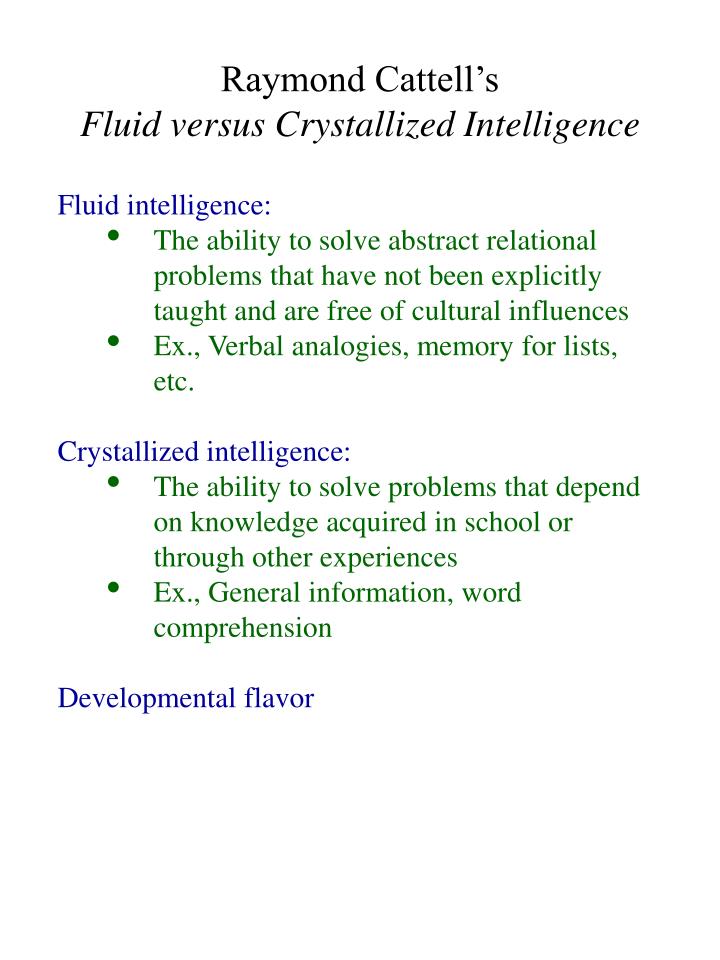


In latter research these individual differences were conceptualized as investment traits–personality characteristics and specific interests that determine the extent to which people invest their time and effort in their intellect ( Ackerman, 1996).Īlthough the original formulation of Cattell's theory had a clear interactive aspect to it, in that the extent to which fluid intelligence is invested in the formation of crystalized intelligence was assumed to depend on the levels of the investment traits, most of the models of the joint effects of fluid intelligence and investment traits on crystalized intelligence have been additive. According to Cattell, crystalized intelligence is determined by fluid intelligence and by non-cognitive individual differences that influence the acquisition of knowledge: “this year's crystallized ability level is a function of last year's fluid ability level – and last year's interest in school work and abstract problems generally” (p.

Fluid intelligence is thought to be related to fundamental cognitive processes such as speed of processing and inspection time, while crystalized intelligence is thought to be related to information acquired in diverse areas such as mathematical knowledge, verbal knowledge and mechanical knowledge ( Schmidt, 2011). On the Interactive Effects of Investment Traits and Fluid Intelligence in the Formation of Crystalized IntelligenceĬattell (1943) distinguished between fluid intelligence that represents a “purely general ability to discriminate and perceive relations between any fundaments, new or old” and crystallized intelligence that “consists of discriminatory habits long established in a particular field, originally through the operation of fluid ability, but no longer requiring insightful perception for their successful operation.” (p.


 0 kommentar(er)
0 kommentar(er)
